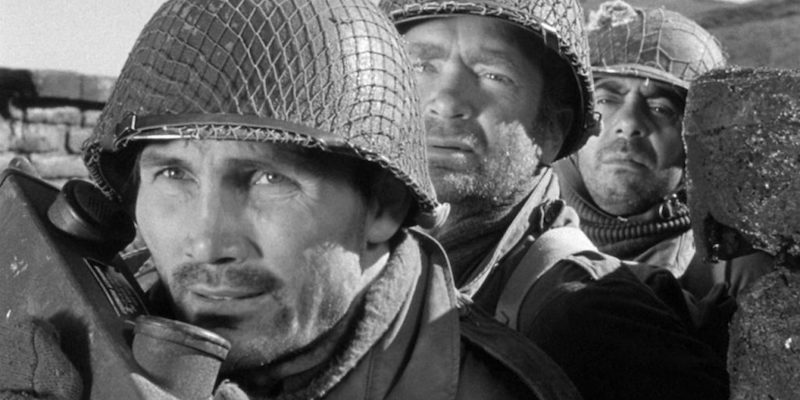No, I don’t mean The Art of War by Sun Tzu, the Chinese military strategist who wrote his foundational text on military strategy in the 5th Century BCE. What I want to discuss is how films set in wartime have influenced my writing—how the visualization of war and its attendant violence onscreen has made its way onto the written page.
I’m eighteen books into the Billy Boyle World War II mystery series, which means my protagonist has seen a lot of fighting and reacted emotionally to what he’s endured, and inflicted. To write this article, I considered which films over the years informed my vision of what the experience of combat in the Second World War must have been like. I have tried to recreate the depictions in print in a manner that is truthful and faithful to those who experienced it.
Here’s the list of films that influenced me, and what each one brought to my writing. This is in no way an exhaustive list or even a best of ranking of war movies. What the list represents is imagery that has been burned into my visual cortex as a movie-goer and then made its way onto the pages of Billy Boyle novels.

First up is The Bridge, a 1959 West German film. It takes place during the last days of the war as seven boys, all about sixteen, are called up from their classroom. They are put in uniform and told to defend the bridge which leads into their village against the advancing Americans. They are under the command of one experienced soldier who knows the bridge is to be blown up. But when he’s killed, the boys are left on their own, and it’s not pretty. This is Lord of the Flies with machine guns, and the transition from childhood martial fantasy to the bloody reality of war is swift and unrelenting. For me, it’s a reminder that war is basically fought by children, or at least by young men and women who do not yet realize what they really have to lose.
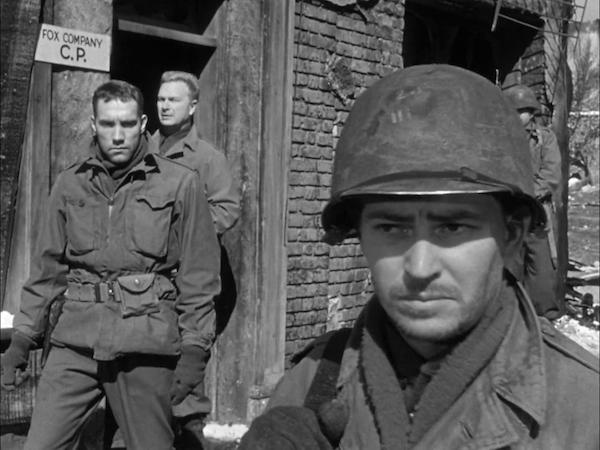
Attack! is a 1956 film directed by Robert Aldrich and starring Jack Palance, Lee Marvin, and Eddie Albert, based on the stage play Fragile Fox. For me, this black and white film is the perfect example of combat noir. Palance plays an infantry lieutenant, Joe Costa, who leads from the front and shares the danger with his men. His commander is Eddie Albert’s Captain Cooney, a cowardly officer more interested in booze and postwar politics than in backing up his men. To make matters worse, Cooney’s superior officer, Colonel Bartlett (played with cool disdain by Lee Marvin) keeps Cooney in place, knowing he’s criminally incompetent, in order to curry favor with the captain’s father, an influential judge back in their home state. No one is looking out for the men except for Joe Costa, and when Cooney leaves them exposed to deadly enemy fire, Costa vows to return for his revenge.
He does make it back, horribly wounded, dying, his gaze zombie-like as he shuffles toward Cooney. Attack! does not present the death of the film’s protagonist as quick or heroic. It is slow, painful, slack-jawed torment. Costa dies before he can inflict his revenge, his open eyes fixed on the survivors, a terrible rictus carved into his face. Another soldier kills Cooney, who was willing to surrender to save his own hide, insuring the execution of a wounded Jewish GI at the hands of the SS.
For a film made less than ten years after the end of the war, it was startling to see the characters reach the conclusion that the best course of action is to murder a senior officer. That’s why the US Army refused to offer any technical assistance or cooperation in the making of the film. The script didn’t support their vision of the army hierarchy, which was a stamp of approval for me.
In the research I do, I watch for the intersection of the powerless being directed into violence by the powerful, who sit a comfortable distance away. In my upcoming novel From the Shadows, I show how General John Dahlquist of the 36th Division in France acted with abysmal and wanton disregard for the lives of the Nisei (Japanese-American) 442nd Regimental Combat Team.
To give high-ranking officers their due, I have a lot of respect for Twelve O’Clock High, a 1949 film starring Gregory Peck. Peck plays General Frank Savage, who is called upon to command the troubled 918th Bomb Group flying B-17 missions against Nazi Germany. What makes this film special is its analysis of situational leadership. Savage arrives as a stern disciplinarian, aiming to instill pride and cohesion into a demoralized unit. As the film progresses, he modulates his approach as the situation improves. Savage flies missions with his group, sharing the same dangers as his men. As his work begins to pay dividends, we can see the emotional effect on Savage, until finally, under the stress of both command and combat, he becomes catatonic. Twelve O’Clock High is an example of both exemplary leadership and the toll it takes, and the characters are based upon real people. They have informed several characters who fit this mold in the books I’ve written, and they’re a welcome relief from the incompetents.

Time to move on to Saving Private Ryan. I have problems with this film, and if this was a best of list, it would not appear. After the opening scene—more on that below—the film descends into the familiar pattern of a squad of diverse soldiers on a special mission. The mission is special, as we all know, which makes it even more ridiculous when Tom Hanks (Captain Miller) decides to stop and attack an isolated machine gun nest protecting a German radar station. Some of his men object, but he orders the assault even though it has nothing to do with his assigned mission. They succeed, but only after their medic has been killed. One German is captured, but Miller decides to show mercy and releases him. Later, this same German soldier is the one who shoots Miller at the bridge in the final scene. A bit heavy-handed plot-wise, not to mention that Miller’s decision to deviate from his primary mission cost him his own life as well as that of his medic. It makes no sense, except as a much too obvious plot device to take us to the scene where Miller, who you might think had other things on his mind as he lay dying, gets to deliver his injunction “earn this” to Private Ryan.
But that opening scene of the D-Day invasion was incredible moviemaking. Once and for all it shattered the previous, whitewashed images of that or any other battle. The blood was thick, and the vision of Stephen Spielberg as played out on the screen was so honest and unrelenting that it is now how we remember that day. The historian and literary critic Paul Fussell (himself a combat infantryman) had this to say about it:
Indeed, the first half-hour of this film should stifle forever all the unfeeling cant about the Good War. I’d like the Omaha Beach section made into a self-contained pseudo-documentary titled “Omaha Beach: Aren’t You Glad You Weren’t There?”
The lesson I draw from SPR is to tell the truth about the horrors of war, but to watch out for the trip wires of melodramatic cliches and audience manipulation.
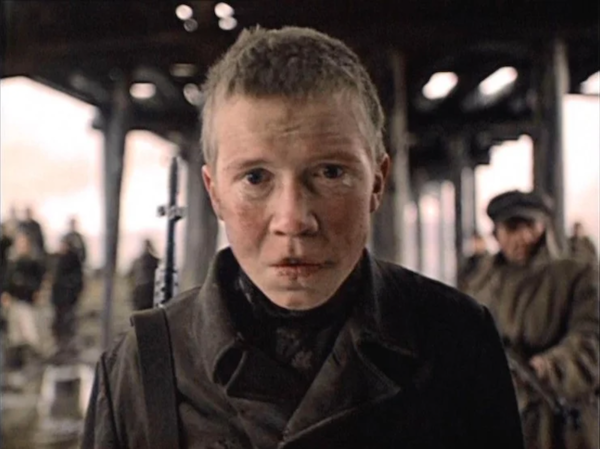
Much more realistic is the 1985 Soviet film Come and See, directed by Elem Klimov. This harrowing movie tells the story of Flyora, a Belarusian youth who joins the Soviet Partisans in fighting the occupying Germans. Come and See is at once surrealistic, apocalyptic, brutal, and horribly realistic. It is not a film for the fainthearted, but what it does for me is to serve as a reminder not to romanticize war or the enemy that Billy Boyle faces. He is fighting the regime that unleashed the atrocities depicted in this film, and although the war on the Western Front was not as egregiously inhumane as the conflict on the Russian Front, the enemy was the same. Every German in uniform wore the swastika. My challenge is to remember that truth while creating German characters who are three-dimensional, complicated, and beyond the stereotypical good or bad German.
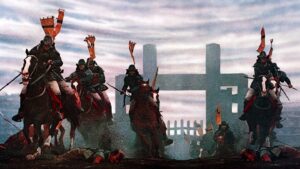
Now we come to the film that has provided more than all the others combined in terms of bringing the visual to the page. Ran (Chaos) is a 1985 Japanese epic cowritten, edited, and directed by Akira Kurosawa. It is a retelling of Shakespeare’s King Lear, set in feudal Japan against a backdrop of warring sons.
Kurosawa’s method of filming the violence of combat had a tremendous impact on me when I first viewed it. As one of the first directors to use slow-motion, Kurosawa explored the almost balletic flow of a fight, whether it was between two samurai or two thousand horsemen. In Ran, one of the most powerful scenes is the first battle, filmed entirely without diegetic sound. Diegetic sound means that the source of the sound is visible on the screen. For the most part, the only sound is the evocative musical score which fades into the background as the viewer is overwhelmed with the silent clash of archers, swordsmen, and cavalry under the multicolored banners of their lords.
Kurosawa uses a telephoto lens to capture the movement and flow of combat, giving the viewer a detached perspective enhanced by the lack of sound. You watch the violence, but at enough of a distance to not have your senses overloaded by it. Your only choice it to witness it.
Of course, it’s different writing a scene, especially one from the first person perspective, but those thundering yet mysteriously silent hoofbeats of Kurosawa’s are always at the edge of my mind. As I write an action scene, I sense silence in the split second of reaction time necessary for the protagonist to stay alive. But sometimes, the cacophony of battle is so great that it merges into a single massive sound that drowns out all in its path. As in the opening chapter of Road of Bones:
The air began to rumble, as if we were flying into a thunderstorm. Cracking explosions of flak darkened the sky around us, the concussive blasts shaking the aircraft, tossing me against the machine gun, then sending me crashing into the ceiling. Each burst seemed louder than the last, until the roar of the engines and the detonating flak merged into a single, all-encompassing tidal wave of sound, penetrating my bones and boring into my skull.
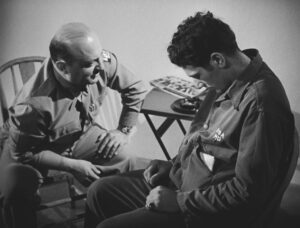
I will leave you with one final film, probably the least well-known of these. Let There Be Light is a 1946 one-hour documentary by director John Huston, made while he served with the US Army Signal Corps. The army wanted to educate the public about treatment being provided to returning veterans suffering from combat fatigue (PTSD). Houston showed veterans both suffering and being treated, the film ending on an upbeat note with some of the men being discharged from the hospital, and the army, ready to resume civilian life.
But the images were too stark and truthful for the army. Just before Houston was about to premiere the film at the Museum of Modern Art in New York in 1946, Army MPs descended and confiscated all copies of his work. The powers that be decided to sweep the reality of combat fatigue under the rug. It wasn’t until the 1980s that the film was eventually released. The existing prints were of poor quality, but in 2010, the film was selected for preservation in the United States National Film Registry by the Library of Congress. The National Film Preservation Foundation then funded restoration of the print and its soundtrack, and a restored version was released in 2012.
The government didn’t want people to see what effect war had upon many who survived it. That is one reason I strive to write truthfully about what the men and women engaged in that long-ago struggle endured. If the powerful want something hushed up, that’s a damn good reason to illuminate it.
Let there be light.
***

